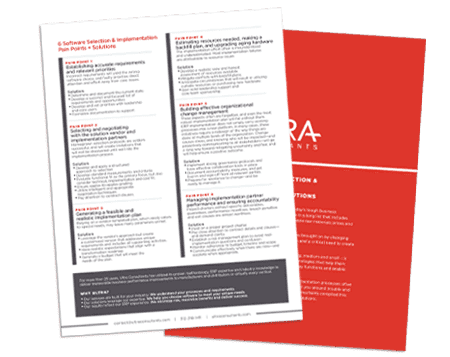Consulting for Manufacturing, Distribution and Beyond.
Put our experience to work for you.
Our customer list includes companies in virtually every segment of manufacturing and distribution as well as experience in healthcare, utilities and government. And since 1994, hundreds of these organizations – big, medium and small – have improved their processes and organizational performance with our guidance.
Expertise is valuable. Our team of business transformation consultants for bring deep knowledge of the fundamentals, pain points and core processes of your industry, as well as an understanding of the unique needs and nuances of your business. The result is specialized solutions that successfully and comprehensively address your specific requirements.
















